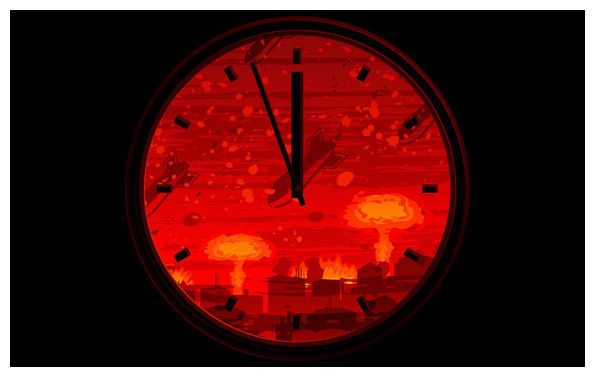
It’s worse than we thought: The Bulletin of the Atomic Scientists have today moved the Doomsday Clock two minutes closer to midnight. The clock now sits at three minutes to midnight which means “probability of global catastrophe is very high”. It has read five minutes to midnight for the last three years.
Why are we closer to doom than yesterday?
The Bulletin of the Atomic Scientists decided to move the clock closer to midnight as a result of continuing climate change and efforts to modernize nuclear weapons stockpiles.

BYPASS THE CENSORS
Sign up to get unfiltered news delivered straight to your inbox.
You can unsubscribe any time. By subscribing you agree to our Terms of Use
“In 2015, unchecked climate change, global nuclear weapons modernizations, and outsized nuclear weapons arsenals pose extraordinary and undeniable threats to the continued existence of humanity,” the group said in a statement. “[W]orld leaders have failed to act with the speed or on the scale required to protect citizens from potential catastrophe. These failures of political leadership endanger every person on Earth.”
Sciencemag.org reports:
At a press conference in Washington, D.C., today, BAS Executive Director Kennette Benedict said accelerating climate change and stalled efforts to reduce nuclear weapons stockpiles had “equal weight” in pushing BAS’s Science and Security Board to reset the clock at 11:57 p.m.
“The reason we feel a greater sense of urgency on the climate issue is that if you want to limit climate change to a certain magnitude, you only have a finite amount of time before the emissions have to stop. Action has to happen soon, starting now, to reduce global emissions,” said Richard Somerville, a member of the board and a climate scientist at the University of California, San Diego.
There are too many nuclear weapons, added BAS board member Sharon Squassoni, a nonproliferation expert at the Center for Strategic and International Studies in Washington, D.C. The risk is not just that “someone is going to press the button,” she said. “The existence of these weapons takes a lot of time, effort, and money to keep them safe, and the bureaucracies are poised to keep these systems going indefinitely.”
The two threats can be linked, Benedict noted. For example, many nations are developing nuclear power to help reduce carbon emissions, potentially raising the risk of proliferating nuclear materials. Meanwhile, sea level rise caused by climate change may endanger nuclear power plants built on coastlines. “Taken together, [the trends] pose truly terrible prospects,” she said.
BAS officials say the last time the Doomsday Clock’s minute hand moved was in January 2012, when it was pushed ahead 1 minute from 6 to 5 minutes before midnight. Since its creation in 1947, the clock has been adjusted only 18 times, ranging from 2 minutes before midnight in 1953 to 17 minutes before midnight in 1991. Before today’s resetting, the clock read 11:57 p.m. just two times: in 1949 when the Soviet Union tested its first atomic bomb and in 1984 when tensions escalated between the United States and the Soviet Union.
“The urgency is real. We are not saying that it is too late to take actions, but the window for action is closing rapidly,” Benedict warns. “The choice is ours, and the clock is ticking.”

